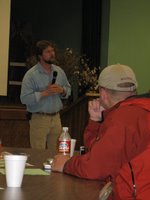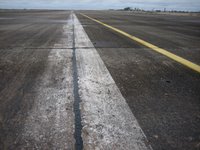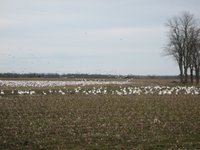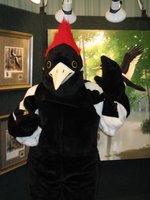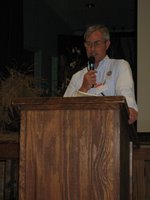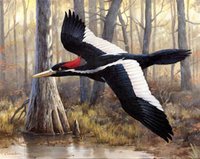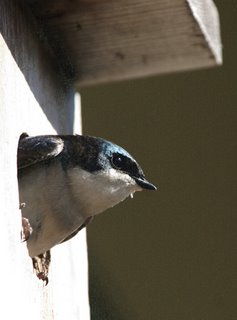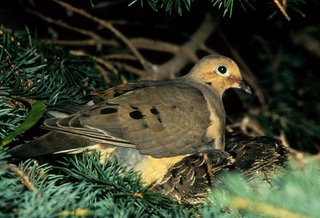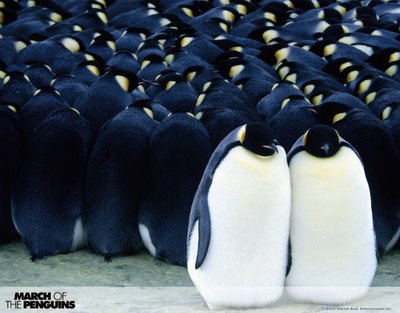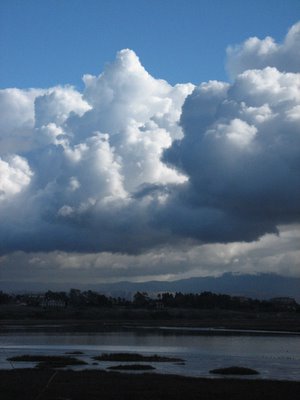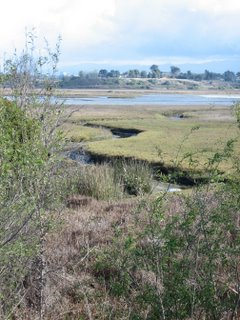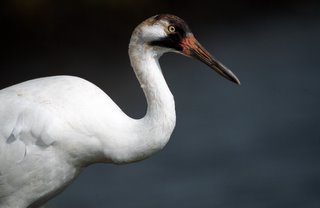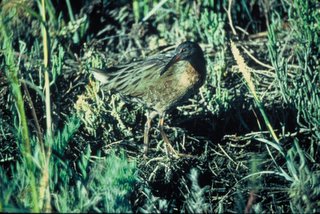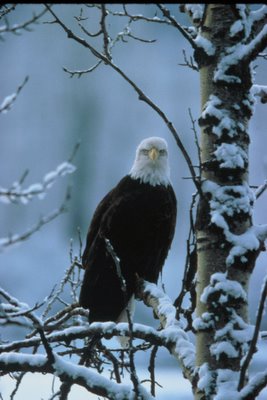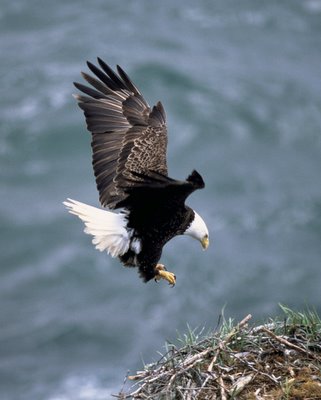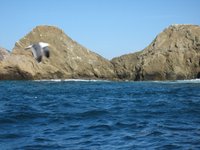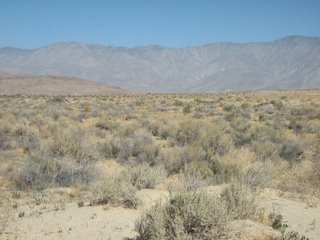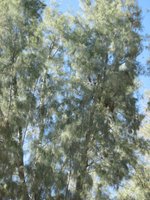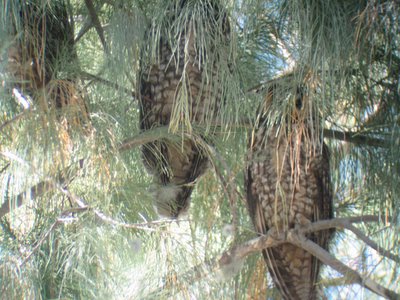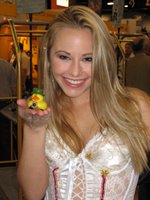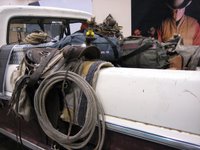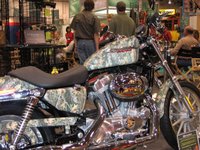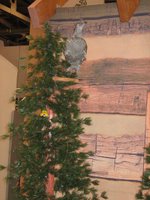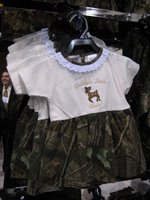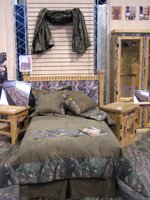The festival season began recently. That means fun is on the horizon! My friend Sharon and I compared schedules and found that the first annual I and the Bird Festival coincided with some open days in our calendars. Woo hoo!

We perused the website, registered online for various events and looked forward to catching up with friends and making more of them. We also checked out the host city's karaoke offerings; it's a tradition.
On the first afternoon of the festival, Sharon and I checked in at the registration desk, picked up our packets with the all-important name tags and event tickets, and then mozied over to the opening-night mixer.
There, we found yummy appetizers (the stuffed mushrooms were particularly tasty) and refreshing beverages (I recommend the local microbrew). We also found some friends and saw some new faces, all of them eager to share tales. (We birders
do like to talk!)
B&B told us about the
freaky Chipping Sparrow that visited their back yard in the Texas Hill Country. He even brought photos to show us the odd bird.
His story prompted
Pamela to describe a somewhat rare visitor to her neck of the woods, a
Bohemian Waxwing. She, too, brought a picture that showed a good field mark and had helped her separate it from Cedar Waxwing.
Then we heard a "Hello! May I have everyone's attention?" Our group turned toward the voice and saw a fellow waving his hand. "Hi. I'm Mike, one of the festival organizers, and I wanted to take a minute to say 'welcome.' We have a few announcements, and then we'll leave you to enjoy the food and camaraderie!"
Mike stepped aside for
Rob, who encouraged everyone to participate in the
Great Backyard Bird Count. The first day is Feb. 17, and count sites aren't limited to back yards and extend to any location in North America.
Eli gave a friendly wave to the group and said, "Did you know that
Darwin Day was last Sunday? I've got some video that celebrates the weird and wonderful natural world over here if you want to take a look."
(Requires Quick Time)One more fellow stepped forward.
Dave said he works at a rehabilitation and education center in Anchorage, and he's keeping
tabs on the possibility that the Bald Eagle could be taken off the federal list of endangered and threatened species. He held up a photograph that showed why he's concerned.
With the announcements over, the hum of conversation again filled the room. Joseph of the
Bird Ecology Study Group related an amusing tale of two
Mynas in Singapore.
Then
Home Bird Notes shared the story of
dabbling in the dark and the soothing effect it left on her. "Watching them on the water for a few minutes in the dark allowed me to forget the snow-panic shopping scene I had just left," she said.
As everyone in our circle smiled in agreement, I noticed that
Julie appeared a little subdued. "How're you doing, Julie?" I asked. She said, "I found
Ora Lee, our Orchard Oriole, silent and still in her cage the other morning." Then she told us all about the 16-year-old bird that came to her as an injured young 'un.
We raised our beverages in a salute to "the Methusaleh of orioles," and then we disbanded for the evening. The next morning would be an early one.
The day began with various workshops and presentations.
Tai Haku gave a talk about
Egyptian Geese in South Africa. He shared photos of some very cute goslings.
Ocellated followed with a presentation about
bird banding. He shared a couple up-close photos, too.
Then
Nuthatch discussed
American Robins' winter range and their status in the northeastern states and Canada. Her maps and graph proved particularly helpful to me.
Wise Crow's presentation also included a helpful graphic: a map of migration pathways. It's pertinent to the plan of an
offshore wind farm in the Texas Gulf Coast, about which he's worried.
On the other hand,
GrrlScientist is
ecstatic over the news about the recently discovered and rediscovered bird species in New Guinea. She shared some fantastic photos, and I appreciated the maps for those of us who might be geographically challenged (c:
Then it was time for the workshops--opportunities to improve our skills. For the gull I.D. workshop,
Charlie used a lot of photos from his trip to the
Choshi port in Japan, and he offered lots of practical travel tips, too.
Carel followed with a discussion of the various sounds made by birds'
wings and the particular instances in which species use those sounds. His paintings added a nice visual touch to the discussion.
While giving a workshop on using a Wacom Graphics Tablet to illustrate birds,
Carl relayed the story behind a Cooper's Hawk
drawing. Quite a story and quite a drawing!
As mentioned before, we birders like to gab, and we also like to get out and bird. It was time to see some species and go on some field trips!
Sharon described her
pelagic trip and the gi
normous binocular used by the boat's captain. She also shared pictures of the boat's menu. Oy.
Duncan led a trip to the
Green Gully in Gippsland, Australia. It included good looks at a nesting Rufous Fantail. What a great outing!
New Dharma Bums set the pace for a beautiful walk that included gorgeous views and
mysterious sounds. Rexroth's Daughter said, "Straight out of the quiet forest came several loud piercing cries. Both bird-like and mammalian." I wish I could've been there!
Pelagic trips attract dedicated (and possibly insane) birders, reported
Mike after his
outing on the ocean. He picked Northern Gannets as his favorite species of the day.
Then
Call led a trip to northern Florida, where wintering
Sandhill Cranes appear to be staging for migration. I'd love to hear their "rattling cacophony" sometime.
Farther north on the East Coast,
John led the way to Dulles International Airport in Virginia in search of a
Snowy Owl. He noted that the airport security staff were cooperative and even looked through spotting scopes at the raptor.
After my day on a
pelagic trip, I had fun sharing photos and a video clip of acrobatic Western Gulls with our growing circle of birding buddies.
The festival wound down soon after that, almost to our relief. Sharon and I always have a blast at these events, given the combination of birding and birders. Hopefully you'll attend a
festival soon, too!
The next I and the Bird will appear on March 2 at
The Birdchaser. Please send your submissions to
Rob before Feb. 28.
(Bald Eagle courtesy of Randall Ingalls. The photo won second place in the flight category of WildBird's 2005 photo contest.)




